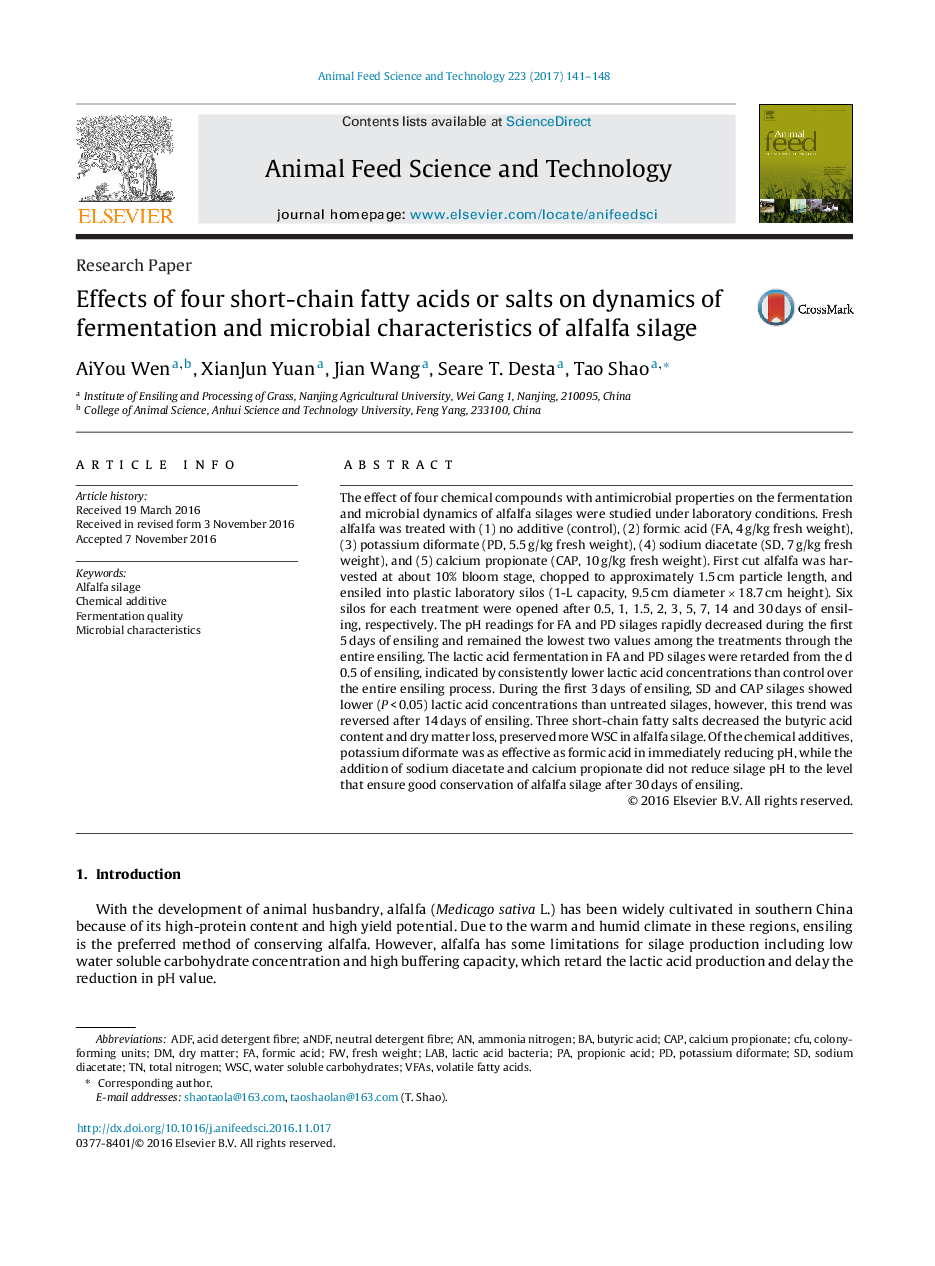| Article ID | Journal | Published Year | Pages | File Type |
|---|---|---|---|---|
| 5538867 | Animal Feed Science and Technology | 2017 | 8 Pages |
Abstract
The effect of four chemical compounds with antimicrobial properties on the fermentation and microbial dynamics of alfalfa silages were studied under laboratory conditions. Fresh alfalfa was treated with (1) no additive (control), (2) formic acid (FA, 4 g/kg fresh weight), (3) potassium diformate (PD, 5.5 g/kg fresh weight), (4) sodium diacetate (SD, 7 g/kg fresh weight), and (5) calcium propionate (CAP, 10 g/kg fresh weight). First cut alfalfa was harvested at about 10% bloom stage, chopped to approximately 1.5 cm particle length, and ensiled into plastic laboratory silos (1-L capacity, 9.5 cm diameter Ã 18.7 cm height). Six silos for each treatment were opened after 0.5, 1, 1.5, 2, 3, 5, 7, 14 and 30 days of ensiling, respectively. The pH readings for FA and PD silages rapidly decreased during the first 5 days of ensiling and remained the lowest two values among the treatments through the entire ensiling. The lactic acid fermentation in FA and PD silages were retarded from the d 0.5 of ensiling, indicated by consistently lower lactic acid concentrations than control over the entire ensiling process. During the first 3 days of ensiling, SD and CAP silages showed lower (P < 0.05) lactic acid concentrations than untreated silages, however, this trend was reversed after 14 days of ensiling. Three short-chain fatty salts decreased the butyric acid content and dry matter loss, preserved more WSC in alfalfa silage. Of the chemical additives, potassium diformate was as effective as formic acid in immediately reducing pH, while the addition of sodium diacetate and calcium propionate did not reduce silage pH to the level that ensure good conservation of alfalfa silage after 30 days of ensiling.
Keywords
ADFPotassium diformateCFUaNDFVFAsWSCLABAmmonia NitrogenButyric acidFormic acidPropionic acidVolatile fatty acidsChemical additiveacid detergent fibreLactic acid bacteriaSodium diacetatealfalfa silageneutral detergent fibredry mattertotal nitrogencolony-forming unitsfresh weightMicrobial characteristicsCalcium propionateWater soluble carbohydratesCaPFermentation quality
Related Topics
Life Sciences
Agricultural and Biological Sciences
Animal Science and Zoology
Authors
AiYou Wen, XianJun Yuan, Jian Wang, Seare T. Desta, Tao Shao,
